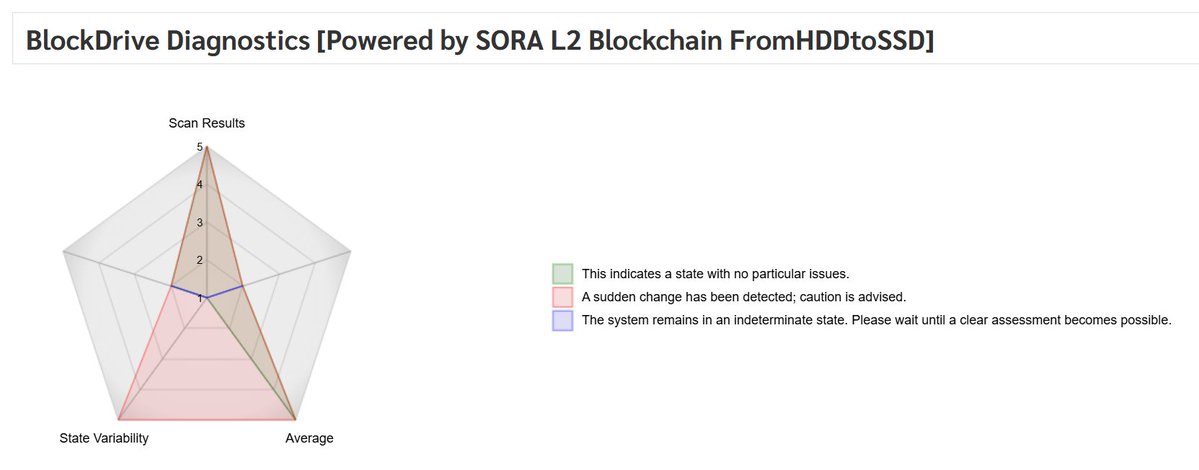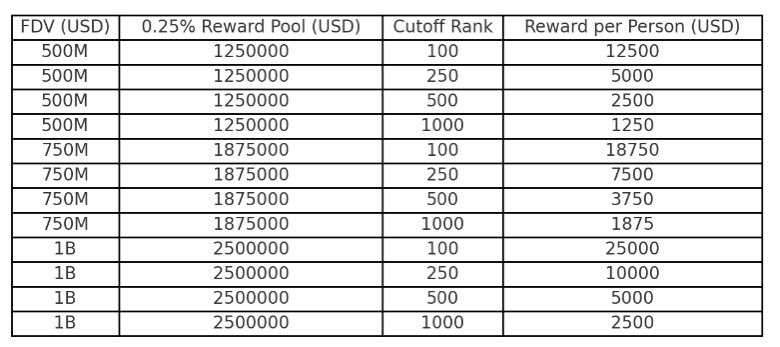The Intersection of Blockchain, Data Analysis, and User Engagement
The Evolution of Data Visualization in Blockchain
In the rapidly evolving world of blockchain technology, the ability to aggregate and analyze data has become increasingly crucial. The implementation of a user interface (UI) to aggregate the analysis results of the SORA L2 Blockchain is a testament to this trend. This UI not only simplifies the complex data generated by blockchain transactions but also makes it accessible to a broader audience. By providing a visual representation of data, users can gain insights more intuitively, fostering a deeper understanding of blockchain operations.
The SORA L2 Blockchain’s UI is designed to collect and display analysis results in a user-friendly manner. This development is part of a broader movement towards making blockchain technology more approachable and transparent. As blockchain continues to permeate various industries, from finance to supply chain management, the need for effective data visualization tools becomes ever more pressing. These tools enable stakeholders to make informed decisions based on real-time data, enhancing the overall efficiency and reliability of blockchain systems.
Imagine a world where every transaction, every smart contract execution, and every blockchain interaction is visualized in real-time. This is not a distant dream but a reality that is slowly unfolding. The SORA L2 Blockchain’s UI is just one example of how data visualization can revolutionize the way we interact with blockchain technology. By making complex data more accessible, these tools can democratize blockchain technology, allowing more people to participate and benefit from its potential.
The Power of Shell Scripting in Log Analysis
On the other side of the tech spectrum, shell scripting has emerged as a powerful tool for log analysis. A recent tweet highlights the creation of an interactive shell script designed to analyze NGINX logs. This script allows users to extract specific insights, such as top IPs, paths, status codes, and user agents, with ease. The ability to quickly generate these insights can be invaluable for system administrators and developers, enabling them to identify and address issues more efficiently.
Shell scripting’s versatility makes it an ideal tool for log analysis. By automating the process of sifting through vast amounts of log data, scripts can save time and reduce the likelihood of human error. Moreover, the interactive nature of the script allows users to tailor their analysis to specific needs, making it a flexible and powerful tool for a variety of applications. As DevOps practices continue to gain traction, the role of shell scripting in log analysis is likely to become even more prominent.
Consider a scenario where a system administrator needs to identify the source of a sudden spike in traffic. With an interactive shell script, they can quickly analyze NGINX logs to pinpoint the top IPs and paths contributing to the spike. This information can then be used to optimize server performance, enhance security, and improve user experience. The power of shell scripting lies in its ability to transform raw log data into actionable insights, making it an indispensable tool for modern IT operations.
The Role of Airdrops in Community Engagement
In the world of cryptocurrency, airdrops have become a popular method for distributing tokens and engaging with the community. A recent tweet discusses the allocation analysis of airdrops on the Magic Newton Discord, highlighting the importance of early participation and community roles. By rewarding early adopters and active community members, airdrops can foster a sense of loyalty and engagement, driving the growth and success of a project.
The allocation of airdrops is often based on various factors, including the role of participants within the community. For example, early explorers and seekers of truth may receive higher allocations, incentivizing early adoption and active participation. This strategy not only helps to build a strong community but also ensures that the tokens are distributed fairly and effectively. As the cryptocurrency landscape continues to evolve, the role of airdrops in community engagement is likely to remain a key factor in the success of blockchain projects.
Think of airdrops as a way to reward the pioneers and enthusiasts who believe in a project from its inception. By allocating tokens to early participants, projects can create a sense of ownership and loyalty, encouraging these individuals to become advocates and ambassadors. This community-driven approach can be a powerful tool for building a sustainable and thriving ecosystem around a blockchain project.
The Legal Implications of Crypto Asset Forfeiture
The intersection of blockchain technology and legal frameworks is a complex and evolving area. A recent tweet discusses a two-hour training session on crypto asset forfeiture, highlighting the challenges and considerations involved in this process. The training covered topics such as chain analysis, token metadata, and fair market value, all of which are crucial for understanding the legal implications of seized cryptocurrency assets.
One of the key challenges in crypto asset forfeiture is determining the fair market value of seized assets. In the world of Web3, the concept of “floor price” can be particularly relevant, especially when dealing with seized NFT scams. The floor price represents the lowest price at which an NFT can be sold, providing a benchmark for valuing seized assets. As the legal landscape continues to adapt to the complexities of blockchain technology, the role of chain analysis and token metadata will become increasingly important in ensuring fair and effective asset forfeiture.
Imagine a scenario where law enforcement agencies need to seize and forfeit cryptocurrency assets. To do this effectively, they must understand the intricacies of blockchain technology, including chain analysis and token metadata. By leveraging these tools, they can determine the fair market value of seized assets, ensuring that the forfeiture process is transparent and equitable. This intersection of technology and law is a critical area of focus as blockchain technology continues to gain mainstream adoption.
The Cultural Influence of Digital Collectibles
The world of digital collectibles, particularly NFTs, has seen a surge in popularity in recent years. A recent tweet discusses the cultural influence of digital collectibles, highlighting the renewed interest in art-inspired NFTs. Art-driven narratives are drawing in new demographics, expanding the market and fostering a more diverse and inclusive community.
The cultural impact of digital collectibles extends beyond the art world, influencing various industries and communities. As more people become aware of the potential of NFTs, the demand for art-inspired collectibles is likely to continue growing. This trend not only benefits artists and creators but also opens up new opportunities for investors and collectors. As the market for digital collectibles continues to evolve, the role of art-driven narratives will be crucial in shaping its future.
Consider the way NFTs have revolutionized the art world. Artists can now create and sell digital art directly to collectors, bypassing traditional gatekeepers. This democratization of art has led to a surge in creativity and innovation, as artists experiment with new mediums and techniques. The cultural influence of digital collectibles is not limited to art; it extends to music, fashion, and even virtual real estate. As more industries embrace NFTs, the possibilities for cultural expression and innovation are endless.
The Future of User Engagement in Blockchain
The future of user engagement in blockchain technology is bright and full of possibilities. From the implementation of user-friendly UIs to the use of shell scripting for log analysis, the tools and techniques available to users are becoming more sophisticated and accessible. As blockchain technology continues to evolve, the need for effective data visualization and analysis tools will only grow, driving innovation and growth in the industry.
The role of airdrops in community engagement is another area of significant potential. By rewarding early adopters and active community members, airdrops can foster a sense of loyalty and engagement, driving the growth and success of blockchain projects. As the legal landscape continues to adapt to the complexities of blockchain technology, the role of chain analysis and token metadata will become increasingly important in ensuring fair and effective asset forfeiture.
Imagine a future where blockchain technology is seamlessly integrated into our daily lives. From financial transactions to supply chain management, blockchain can enhance transparency, security, and efficiency. As user engagement tools and techniques continue to evolve, the potential for blockchain technology to transform industries and communities is immense. The future of blockchain is not just about technology; it is about creating a more connected, transparent, and inclusive world.
Conclusion: Embracing the Future of Blockchain Technology
In conclusion, the intersection of blockchain technology, data analysis, and user engagement is a dynamic and exciting field. From the implementation of user-friendly UIs to the use of shell scripting for log analysis, the tools and techniques available to users are becoming more sophisticated and accessible. As blockchain technology continues to evolve, the need for effective data visualization and analysis tools will only grow, driving innovation and growth in the industry.
The role of airdrops in community engagement is another area of significant potential. By rewarding early adopters and active community members, airdrops can foster a sense of loyalty and engagement, driving the growth and success of blockchain projects. As the legal landscape continues to adapt to the complexities of blockchain technology, the role of chain analysis and token metadata will become increasingly important in ensuring fair and effective asset forfeiture.
As we look to the future, it is clear that blockchain technology will continue to play a pivotal role in shaping the digital landscape. By embracing the tools and techniques available to us, we can unlock new opportunities and drive innovation in the industry. The future of blockchain technology is bright, and the possibilities are endless. The journey of blockchain technology is just beginning, and the potential for transformation is immense. By staying informed, adaptable, and innovative, we can harness the power of blockchain to create a better, more connected world.





